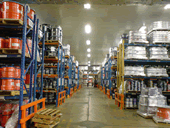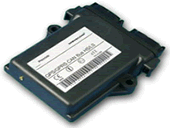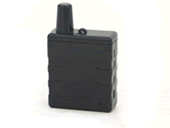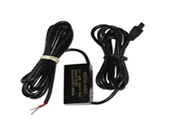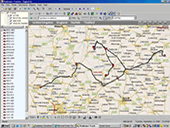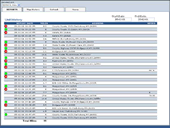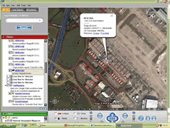Bio-chip implant arrives for cashless transactions

At a global security conference held today in Paris, an American company announced a new syringeinjectable
microchip implant for humans, designed to be used as a fraud-proof payment method for cash and
credit-card transactions. The chip implant is being presented as an advance over credit cards and smart cards,
which, absent biometrics and appropriate safeguard technologies, are subject to theft, resulting in identity
fraud. Identity fraud costs the banking and financial industry some $48 billion a year, and

consumers $5
billion, according to 2002 Federal Trade Commission estimates.
In his speech today at the ID World 2003 conference in Paris, France, Scott R. Silverman, CEO of
Applied Digital Solutions, called the chip a "loss-proof solution" and said that the chip's "unique under-theskin
format" could be used for a variety of identification applications in the security and financial worlds.
The company will have to compete, though, with organizations using just a fingerprint scan for similar
applications. The ID World Conference, held yesterday and today at the Charles de Gaulle Hilton, focused on
current and future applications of radio frequency identification (RFID) technologies, biometrics, smart cards
and data collection. The company's various "VeriChips" are RFID chips, which contain a unique
identification number and can carry other personal data about the implantee. When radio-frequency energy

passes from a scanner, it energizes the chip, which is passive (not independently powered), and which then
emits a radio-frequency signal transmitting the chip's information to the reader, which in turn links with a
database.
ADS has previously touted its radio frequency identification (RFID) chips for secure building access,
computer access, storage of medical records, anti-kidnapping initiatives and a variety of law-enforcement
applications. The company has also developed proprietary hand-held readers and portal readers that can scan

data when an implantee enters a building or room.
The "cashless society" application is not new – it has been discussed previously by Applied Digital.
Today's speech, however, represented the first formal public announcement by the company of such a
program.
In announcing VeriPay to ID World delegates, Silverman stated the implant has "enormous marketplace
potential" and invited banking and credit companies to partner with VeriChip Corporation (a subsidiary of
ADS) in developing specific commercial applications beginning with pilot programs and market tests.
Applied Digital's announcement in Paris suggested wireless technologies, RFID development, new software

solutions, smart-card applications and subdermal implants might one day merge as the ultimate solution for a
world fraught with identity theft, threatened by terrorism, buffeted by cash-strapped governments and lawenforcement
agencies looking for easy data-collection, and corporations interested in the marketing bonanza
that cutting-edge identification, payment, and location-based technologies can afford.
Cashless payment systems are now part of a larger technology development subset: government
identification experiments that seek to combine cashless payment applications with national ID information
2
on media (such as a "smart" card), which contain a whole host of government, personal, employment and
commercial data and applications on a single, contactless RFID chip. In some scenarios, governmentcorporate
coalitions are advocating such a chip be used by employees also to access entry to their workplace
and the company computer network, reducing the cost outlay of the corporations for individual ID cards.
Malaysia's "MyKad" national ID "smart" card is the foremost example.
Meanwhile, privacy advocates have expressed concern over RFID technology rollouts, citing database
concerns and the specter of individuals' RFID chips being read without permission by people who have their
own hand-held readers. Several privacy and civil liberties groups have recently called for a voluntary
moratorium on RFID tagging "until a formal technology assessment process involving all stakeholders,
including consumers, can take place." Signatories to the petition include the American Civil Liberties Union,
the Electronic Frontier Foundation, the Electronic Privacy Information Center, Privacy International and the
Foundation for Information Policy Research, a British think tank.

Commenting on today's announcement, Richard Smith, a computer industry consultant, referred to what
some "netizens" are already calling "chipectomies": "VeriChips can still be stolen. It's just a bit gruesome
when to think how the crooks will do these kinds of robberies." Citing MasterCard's PayPass, Smith pointed
out that most of the major credit-card companies are looking at RFID chips to make credit cards quicker,
easier, and safer to use.
"The big problem is money," said Smith. "It will take billions of dollars to upgrade the credit-card
networks from magstripe readers to RFID readers. During the transition, a credit card is going to need both a
magstripe and an RFID chip so that it is universally accepted." Some industry professionals advocate having
citizens pay for combined national ID/cashless pay chips, which would be embedded in a chosen medium.
Identification technologies using RFID can take a wide variety of physical forms and show no sign yet of
coalescing into a single worldwide standard. Prior to today's announcement, Art Kranzley, senior vice
president at MasterCard, commented on the Pay Pass system in a USA Today interview: "We're certainly
looking at designs like key fobs. It could be in a pen or a pair of earrings. Ultimately, it could be embedded
in anything – someday, maybe even under the skin."











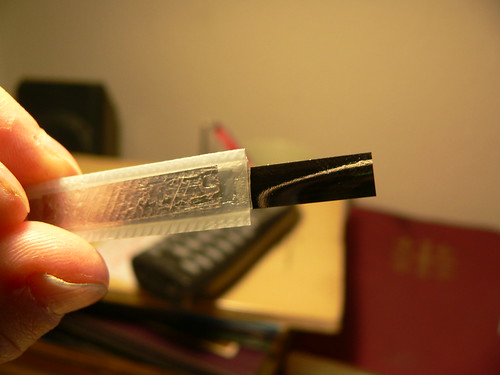
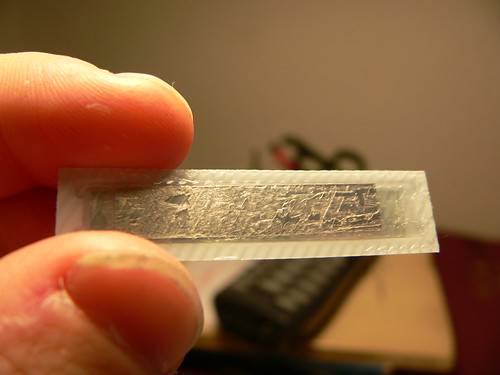 RFID is already in use all around us. Ever chipped your pet dog or cat with an ID tag? Or used an EZPass through a toll booth? Or paid for gas using ExxonMobils' SpeedPass? Then you've used RFID.
RFID is already in use all around us. Ever chipped your pet dog or cat with an ID tag? Or used an EZPass through a toll booth? Or paid for gas using ExxonMobils' SpeedPass? Then you've used RFID.



 consumers $5
consumers $5




 Because ActiveWave designs its own RFID tags, readers, and host software, we are able to provide you with a seamless integrated RFID solution. An ActiveWave RFID integrated solution is capable of tracking such diverse elements as containers, pallets, furniture, test equipment, vehicles, and hospital patients.
Because ActiveWave designs its own RFID tags, readers, and host software, we are able to provide you with a seamless integrated RFID solution. An ActiveWave RFID integrated solution is capable of tracking such diverse elements as containers, pallets, furniture, test equipment, vehicles, and hospital patients.









 Extend the reach of your RFID network and achieve a new level of visibility into inventory and assets with the RD5000 Mobile RFID Reader. This compact, rugged reader can be installed almost anywhere — on material handling equipment such as forklifts, on mobile carts, portable skate wheel conveyors or even in hard to reach places where a cabled fixed reader would not be practical.Designed for true mobility and mobile applications, this device provides wireless LAN connectivity so product is easily tracked as it moves throughout your operations. The result is granular real-time information — allowing you to achieve a new level of productivity and efficiency throughout your enterprise.
Extend the reach of your RFID network and achieve a new level of visibility into inventory and assets with the RD5000 Mobile RFID Reader. This compact, rugged reader can be installed almost anywhere — on material handling equipment such as forklifts, on mobile carts, portable skate wheel conveyors or even in hard to reach places where a cabled fixed reader would not be practical.Designed for true mobility and mobile applications, this device provides wireless LAN connectivity so product is easily tracked as it moves throughout your operations. The result is granular real-time information — allowing you to achieve a new level of productivity and efficiency throughout your enterprise. Easy to deploy, use, and manage, Motorola’s high performance FX7400 series of fixed RFID readers is ideally suited for global enterprise deployments in space-constrained, customer-facing environments. It boasts a compact design married with a set of highly integrated, enterprise features including: auto-discovery and application-specific set-up for ease of installation; power over Ethernet (POE) to eliminate the need for costly power drops; and advanced features for secure data transmission. This unique combination makes the FX7400 series of RFID readers particularly well-suited for retail inventory and enterprise asset management applications in any environment where performance and a small footprint are important.
Easy to deploy, use, and manage, Motorola’s high performance FX7400 series of fixed RFID readers is ideally suited for global enterprise deployments in space-constrained, customer-facing environments. It boasts a compact design married with a set of highly integrated, enterprise features including: auto-discovery and application-specific set-up for ease of installation; power over Ethernet (POE) to eliminate the need for costly power drops; and advanced features for secure data transmission. This unique combination makes the FX7400 series of RFID readers particularly well-suited for retail inventory and enterprise asset management applications in any environment where performance and a small footprint are important.